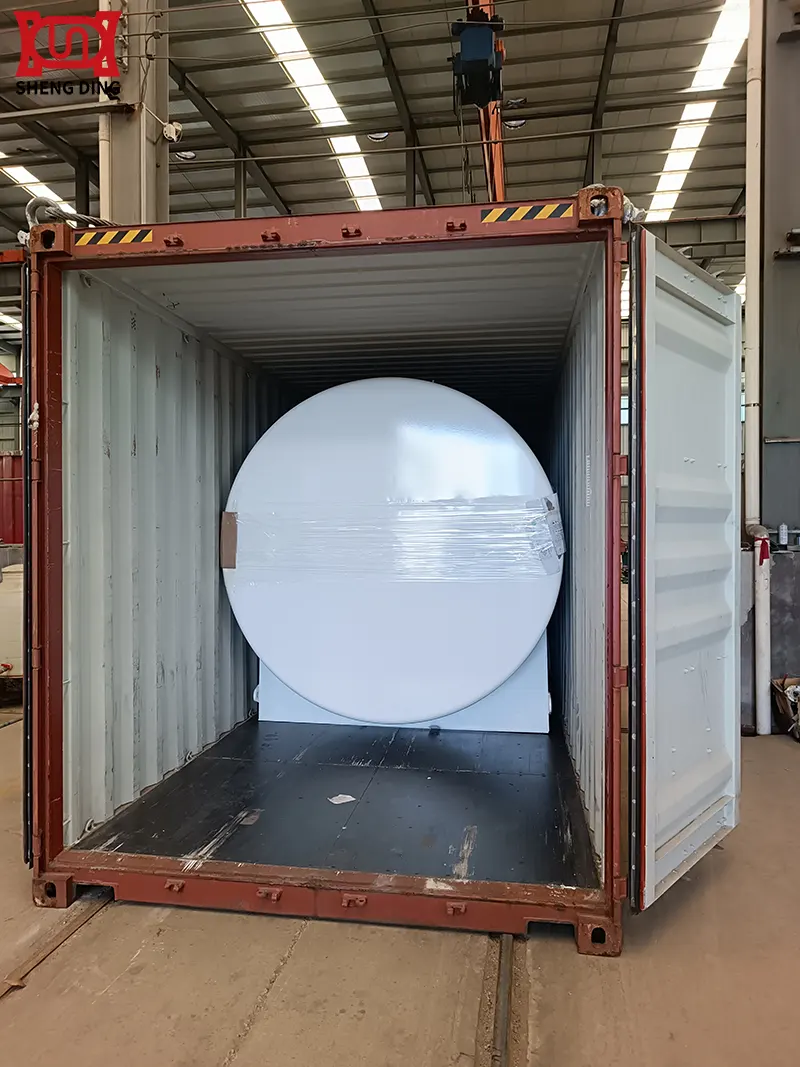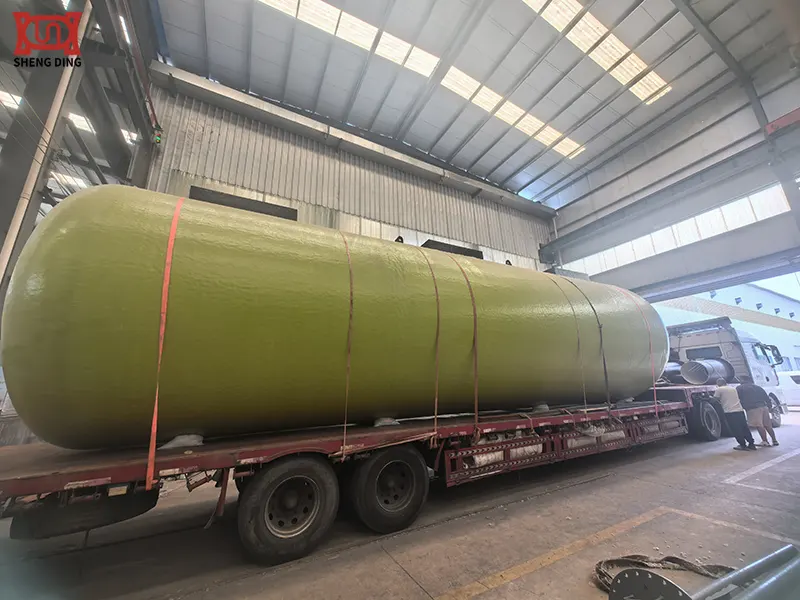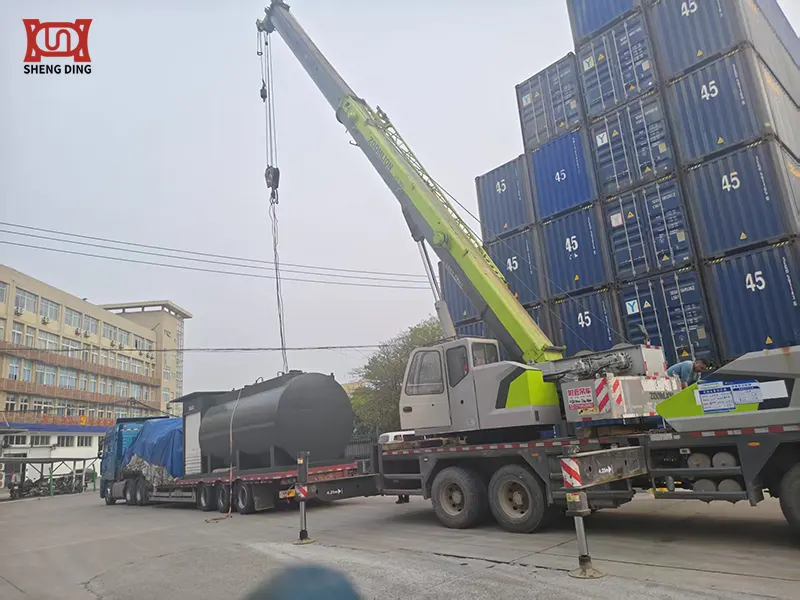Brief analysis of the reasons why double-layer oil tanks have become the mainstream choice for oil storage facilities
At present, double-layer oil tanks are basically used in oil storage. This is mainly because it has significant advantages in environmental protection, safety, long-term economy and regulatory compliance. It is the mainstream choice for oil storage facilities such as gas stations and oil depots. In particular, steel-reinforced fiberglass double-layer oil tanks or all-composite double-layer oil tanks that meet modern environmental protection standards are mainstream oil storage equipment recognized by the industry worldwide. Let's analyze the reasons why double-layer oil tanks have become the mainstream choice for oil storage facilities.
I. Core advantages: excellent environmental protection and anti-leakage performance
The main reason why a device is deeply loved by the market is definitely its unique and excellent product performance. The same is true for double-layer oil tanks. It not only meets the safe storage of oil products, but also has functions in environmental protection and hazard warning that other products do not have.
1. Active anti-leakage design:
- Double barrier: It is composed of an inner tank (oil storage) and an outer tank (protection), and a continuous and closed gap space (usually 3~5mm) is formed between the two tank walls.
- Early leakage monitoring: The gap space is the core channel of the leakage monitoring system. By installing pressure, vacuum or liquid media sensors, the state changes of the space can be monitored in real time or regularly.
- Rapid alarm: Once the inner tank or outer tank leaks (even if it is very small), the monitoring system can immediately issue an alarm to achieve early detection and greatly reduce the risk of pollution spread.
2. Prevent soil and groundwater pollution:
- This is the most fundamental and important advantage of double-layer tanks.
- Even if the inner tank is broken, the leaked oil will be trapped in the gap space by the outer tank and will not leak directly into the soil and groundwater.
- As the second line of defense, the outer tank provides additional protection to prevent external moisture and corrosive substances from invading the inner tank, and also prevent the leakage of the inner tank from leaking.
- Significantly reduce the environmental disasters, sky-high pollution control costs and legal liability risks caused by tank leakage.


II. Safety improvement
For oil storage safety is definitely the primary consideration, which is mainly inseparable from the flammable and explosive medium of the storage. The design concept of double-layer oil tanks also originated from this. It can detect safety hazards in the embryonic stage as much as possible, leaving users enough time to deal with them.
1. Reduce the risk of fire and explosion:
- The isolation effect of the outer tank reduces the risk of inner tank rupture due to soil corrosion and external mechanical damage.
- Real-time leakage monitoring can provide timely warnings to prevent the accumulation of leaked oil products to form flammable vapor clouds or seep into the ground to cause more complex accidents.
2. Enhance structural reliability:
- Modern double-layer tanks (especially FRP composite tanks) have excellent corrosion resistance (resistant to soil, groundwater, oil and gas corrosion) and longer service life (usually designed life ¡Ý 30 years).
- The outer tank has a certain buffering and resistance effect on external mechanical impact and soil stress.
- Some double-layer tank designs (such as SF double-layer tanks) also have higher compressive strength.
III. Better long-term economic performance (low life cycle cost)
1. Avoid sky-high pollution control costs:
- The cost of soil and groundwater pollution caused by single-layer tank leakage is millions or even tens of millions of RMB, and the repair cycle is long. The leak-proof and early warning capabilities of double-layer tanks fundamentally avoid such catastrophic economic losses.
2. Reduce monitoring and maintenance costs:
- Although the initial investment in the double-layer tank itself and the monitoring system is higher than that of the single-layer tank + impermeable tank, its built-in, automated leakage monitoring system greatly simplifies the leak detection process.
- Compared with traditional single-layer tanks that rely on external monitoring wells (regular manual sampling and testing are required, which is costly and delayed) or the construction of concrete impermeable tanks with high maintenance costs, the monitoring of double-layer tanks is more efficient, more sensitive, and more labor-saving.
3. Extend service life and reduce replacement frequency:
- Its excellent corrosion resistance makes its service life far longer than that of traditional single-layer steel tanks, reducing the replacement cost and business suspension loss caused by tank corrosion and scrapping.
4. Reduce insurance premiums and legal liability risks:
- Using double-layer tanks usually obtains more favorable environmental liability insurance premiums.
- It greatly reduces the risk of huge compensation, fines and litigation due to leakage and environmental pollution.
IV. Comply with regulations and policy requirements (mandatory trend)
1. National and local mandatory standards:
- China's national standards (such as GB 50156 "Technical Standards for Automobile Refueling, Gas and Hydrogen Stations") clearly stipulate that newly built and renovated gas station buried oil tanks must use double-layer oil tanks or set up anti-seepage pools. Double-layer tanks have become the preferred option because of their reliable performance, relatively simple construction and efficient monitoring.
- Environmental protection regulations (such as the "Water Pollution Prevention and Control Law" and the "Soil Pollution Prevention and Control Law") have strict requirements for the anti-leakage of underground storage tanks. Double-layer tanks are one of the most effective technical means to meet these requirements.
- The European Union Standard System (EN) is the most stringent double-layer tank standard in the industry. It not only defines the use standards of double-layer oil tanks, but also stipulates the standards for the workshop environment for the production of double-layer oil tanks.
- The US standard is centered on third-party certification (UL) and industry specifications (STI/API), emphasizing actual performance verification. Fire protection, anti-corrosion, and structural strength test standards. Compression, impact resistance, and long-term durability tests for composite materials.
- ISO international standards are currently the global common framework and are gradually developing into an emerging trend. It mainly covers the design principles for leakage monitoring, intends to unify the global steel tank design, testing and monitoring requirements, and standardize the mechanical properties and permeability tests of composite tanks.
2. Policy promotion and subsidies (some regions):
In the wave of anti-seepage transformation of gas stations, many local governments explicitly recommend or give priority to the use of double-layer tanks to replace single-layer tanks + anti-seepage pools, and some regions may also provide certain financial subsidies or policy preferences.
China's policies and subsidies
- PetroChina and Sinopec require urban stations to use double-layer tanks in their corporate standards and bear more than 70% of the transformation costs of gas stations.
- Zhoushan, Zhejiang, through the construction of a bonded fuel oil center, supports the establishment of double-layer tank storage facilities near anchorages to reduce corporate logistics costs (indirect subsidies).
- Some provinces and cities (such as Shandong and Jiangsu) provide special environmental protection subsidies for gas stations that replace double-layer tanks, covering about 30% of the transformation costs.
US Policies and Incentives
- Underground Storage Tank Trust Fund: Provides low-interest loans to small businesses, covering 20%-40% of the renovation costs.
- Tax Credits: Double-layer tank installations that meet environmental standards can apply for federal tax deductions (such as Section 179D of the Clean Energy Act).
EU Policies and Support
- LIFE Environmental Fund: Provides up to 50% cost support for gas station renovation projects, focusing on Eastern Europe.
- Germany and France: Return VAT for qualified double-layer tank projects (tax rate reduction of 7%-19%).
Japan Policies and Guidance
- The Petroleum Energy Center (PEC) provides renovation subsidies, covering 20%-30% of corporate costs.
- Industry associations (such as the Japan Petroleum Alliance) promote old station renovation plans and jointly provide manufacturers with low-cost installment plans.
V. Installation and Maintenance Convenience
1. Relatively simple installation:
- Compared with the construction of concrete impermeable pools, the installation of double-layer tanks usually takes a shorter time and requires less earthwork (especially for sites with limited space).
- Modern double-layer tanks (especially FF all-composite tanks) are light and easy to hoist.
2. Relatively centralized maintenance:
- The leakage monitoring system is centralized on the console or monitoring panel, which is convenient for daily viewing and recording.
- There is no need for frequent underground sampling and laboratory analysis like traditional monitoring wells.


VI. Technical maturity and reliability
- Double-layer tank technology (especially pressure/vacuum monitoring systems) has a history of mature application in developed countries such as Europe and the United States for decades.
- After more than ten years of promotion and application in the industry, relevant standards, manufacturing processes, installation specifications and monitoring technologies have been very complete, and product quality and system reliability have been fully verified.
Summary: The core value of double-layer oil tanks lies in "preventing problems before they happen"
| Comparison dimensions | Double-layer oil tanks | Traditional single-layer oil tanks (without effective protection) |
| Environmental protection | Double barriers, active monitoring, effective prevention of soil and groundwater pollution | High risk of leakage, serious consequences of pollution |
| Safety | More reliable structure, timely leakage warning | Easy to corrode, leakage is not easy to detect in time |
| Long-term economy | Avoid sky-high treatment costs, long life, relatively low maintenance costs | Potential pollution treatment costs are extremely high, short life |
| Regulatory compliance | Meet national mandatory standards, the first choice for new construction/renovation | Does not meet current environmental protection and construction standards |
| Installation and maintenance | Faster installation, convenient monitoring and maintenance | Simple installation, but complex and costly later monitoring |
Selection suggestions:
- New station: Double-layer oil tanks that meet international standards (ISO international standards) must be selected.
- Renovation station: It is strongly recommended to replace old single-layer tanks with double-layer oil tanks. This is the most effective, economical and regulatory anti-seepage renovation solution.
- Selection Note: Choose brands and products with production qualification certification, reliable quality, sensitive and stable monitoring system, and ensure that they are installed and debugged by professional teams.
In short, the "high initial investment" of double-layer oil tanks is exchanged for "fundamental guarantee of environmental safety" and "significant reduction of long-term operation risks". Its comprehensive benefits far outweigh the costs, and it is an indispensable safety and environmental protection infrastructure for underground storage and transportation of modern petroleum products.
Written by
TAIAN SHENGDING METAL CONTAINER MANUFACTURING CO., LTD.
Editor Wang
www.self-bunded-tank.com
WhatsApp:+86 152 5486 3111
Email:shengdingtank@126.com
- WhatsApp
- E-MailE-Mail:shengdingtank@126.com
- WeChatWeChat:15254863111









